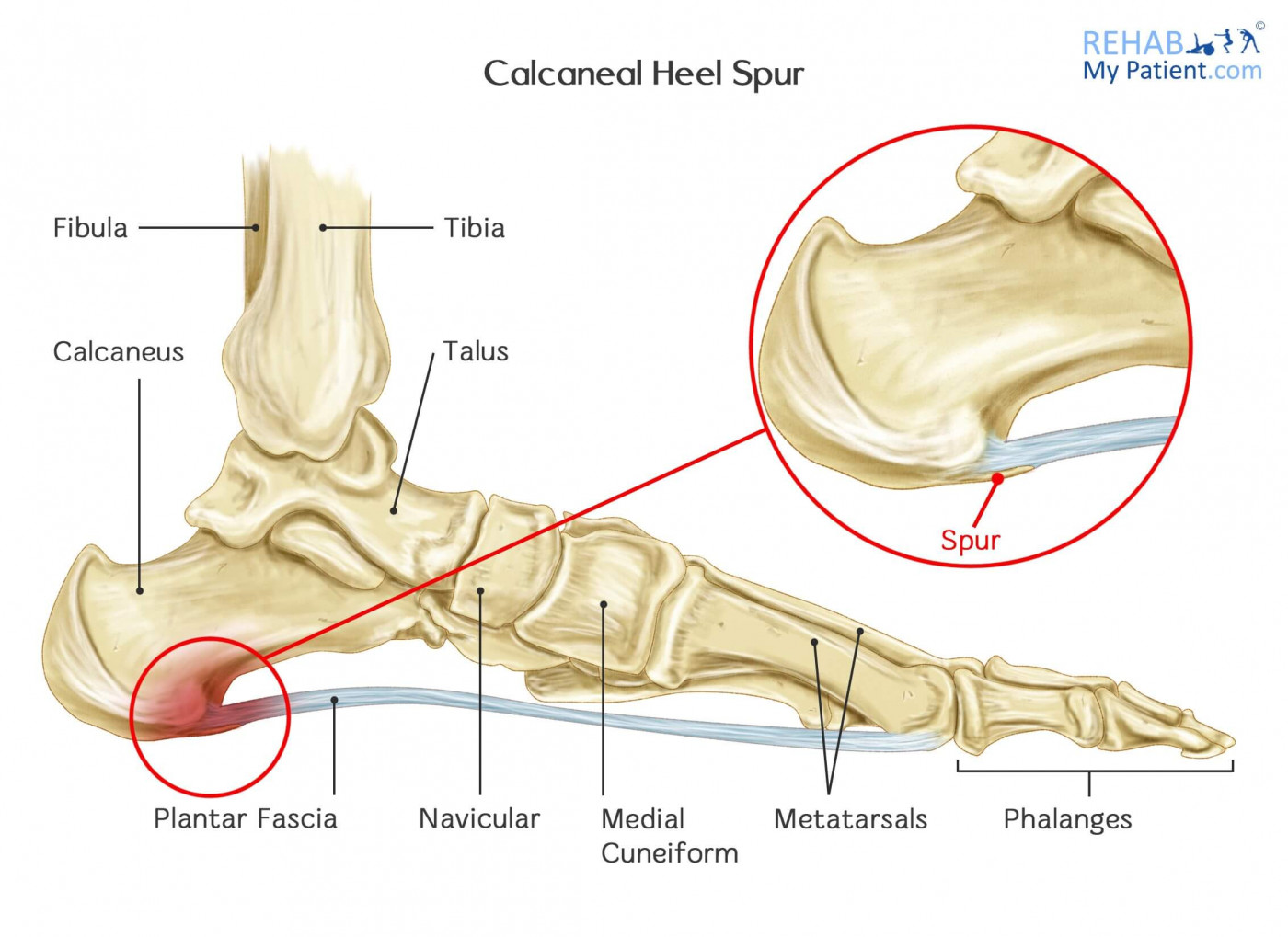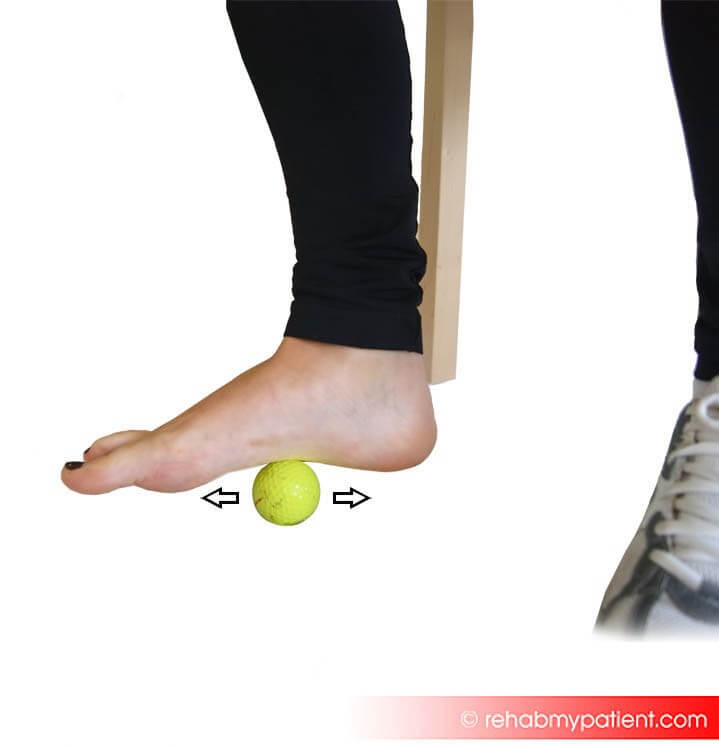Calcaneal Spur
Posted on 09th Feb 2018 / Published in: Ankle

Calcaneal spurs are calcium deposits that are on the underneath of the heel bone. They tend to be painful, and can be secondary to a condition called plantar fasciitis (an inflammation of the plantar fascia in the sole of the foot).
A calcaneal spur is typically diagnosed by physical examination, or by X-ray. During X-ray sometimes a protrusion can be seen extending forward by almost half an inch. Calcaneal spurs can be painless, or they can cause intense heel pain.
When plantar fasciitis becomes chronic (which it so often does), the insertion tendon of the plantar fascia can traction against the heel bone and cause the calcaneal spur to slowly grow.
Calcaneus Spur Anatomy:
The plantar fascia is very strong. This thick band underneath the skin along the base of the foot is connected to the heel bone, known as the calcaneus. It fans forward to attach to the base of the toes. The structure acts in the same manner as a bowstring to help support the arch formed by the foot bones. A calcaneal spurs are often known as a heel spur.

How to Treat a Calcaneus Spur:
- Physical Therapy
Sports massage therapy, or physiotherapy is one of the best methods of treatment to stretch the tight tissues around the foot, improve gait mechanics, reduce inflammation and heal the plantar fascia. Do not expect over-night miracles, but with time symptoms can and do improve. Reducing plantar fasciitis will reduce the likelihood of developing a calcaneal spur. Your Rehab My Patient therapist will also guide you on home exercises you can do.

- Cushioned heel pads
When it comes to walking on the injured foot, you need something in place to provide you with the cushion needed to protect the foot and prevent undue pressure on the heel.
- Supportive footwear
One of the biggest problems today is that people don’t wear the proper footwear. Wearing shoes that are too small, too pointy and too narrow will only lead to more problems with the feet. You need something that can support the feet and maintain posture to prevent injury.
- Anti-Inflammatory Medications
Ibuprofen, naproxen and ketoprofen are all great anti-inflammatory medications. By reducing the swelling, you can help to alleviate some of the pain associated with the injury.
- Surgery
In the event none of the traditional treatment methods work, surgery is always an option to address the issue. Through surgery, the protrusion can be removed to provide the foot with the chance to properly heal.
- Custom orthotics
Using a custom orthotic will provide your foot with the extra cushion it needs to make sure every step is padded with comfort and minimal pressure. Since the orthotics are customized for your specific foot, you can rest assured they will fit beautifully without having to worry about slipping.
Tips:
- Avoid running or jogging on hard surfaces. The more pressure that goes on the foot in any given time, the more likely you are to suffer with a foot injury.
- Spending too much time on your feet leaves you prone to injuries from excessive strain and pressure. Feet need time to rest and heal, so you need to take breaks throughout the day.
- As you grow older, the flexibility of the plantar fascia decreases, which thins the protective fat pad in the heel.
- Shoes that don’t fit properly, especially those with minimal support, leave your feet unprotected and prone to a calcaneal spur.
- For those who have a walking gait abnormality, spurs can occur. The abnormality places an excessive amount of stress on the heel bone as well as nerves ligaments and tendons near the heel.
Sign UP
Sign up for your free trial now!
Get started with Rehab My Patient today and revolutionize your exercise prescription process for effective rehabilitation.
Start Your 14-Day Free Trial